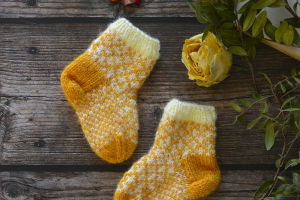Keeping a child's room organized can be a challenging yet rewarding task for parents. From toys to books and school supplies, children's rooms tend to collect a lot of clutter.
However, Lykkers, the key to maintaining a tidy and functional space lies in finding smart storage solutions that encourage children to keep their rooms neat and accessible.
Organizing Toys
Toys are one of the most common items in a child's room. From building blocks to stuffed animals, these items are often scattered across the room. To keep things in order, it is essential to find storage solutions that minimize clutter.
One of the most effective ways to store toys is by using beds with built-in drawers. These beds provide additional storage space where toys, books, and even clothes can be neatly tucked away. Drawers are deep and wide enough to accommodate a variety of toys, such as action figures, dolls, and puzzle sets, keeping them organized and easy to access.
Alternatively, colorful baskets and felt boxes can also help keep toys stored in an aesthetically pleasing manner, but they may create visible clutter. Choosing functional storage options like multi-purpose furniture pieces that combine storage and seating is also an excellent way to save space and maintain organization.
Storing Plush Toys
Stuffed animals are beloved by children, but they can take up a lot of space in the room. Instead of letting them pile up on the bed or floor, designate a specific storage space for them. A closed container is ideal for keeping these soft toys safe from dust and maintaining a tidy room.
For a more creative approach, parents can repurpose laundry baskets or decorative containers to store stuffed animals in a fun and organized manner. Another option is to use a bookshelf or shelf unit specifically for displaying these toys, making them accessible to the child while keeping them off the floor.
Arranging Books
Books are another staple in a child's room. From picture books to early readers, books quickly accumulate and can create a mess. The key to organizing books is to create a system that allows easy access and encourages children to tidy up on their own.
Start by involving the child in choosing where to place their favorite books. You can arrange books by frequency of use, genre, or even by size. Keeping the most frequently read books within easy reach will encourage children to read more and keep the room organized.
Additionally, using bookends or shelves can help prevent books from falling over or becoming disorganized. If space is limited, consider narrow, vertical shelving units or wall-mounted shelves that take up minimal space while providing ample storage.
Organizing Clothes
Managing clothing in a child's room requires the right furniture to keep things neat. A well-organized wardrobe is essential for keeping clothes tidy and easy to find. Drawers and storage bins are great solutions for organizing smaller items like socks, hats, and accessories.
A dresser or chest of drawers can hold many clothes, such as shirts, sweaters, and pajamas. If closet space is limited, a combination of a wardrobe and storage unit can maximize available space, keeping clothes organized and easily accessible.
For younger children who may not be able to reach higher shelves, a low dresser or cubby system can encourage them to put away their clothes independently. A well-organized clothing system not only keeps the room tidy but also helps children develop good habits of responsibility.
Organizing School Supplies
When children reach school age, the amount of school supplies in their room can quickly multiply. To prevent a chaotic workspace, it is essential to have dedicated storage for stationery, books, and school materials.
Consider placing a small bookshelf or wall-mounted shelving unit near the study area to store books, notebooks, and school supplies. Using drawer organizers for pens, markers, and other stationery items will keep everything in its place. It's important to create a functional study corner that encourages concentration and reduces distractions.
For added convenience, opt for a desk with built-in storage or shelves to keep school materials within easy reach. This will minimize the time spent searching for materials, allowing the child to stay focused on their work.
Maintaining a Tidy and Functional Room
The key to maintaining a tidy child's room lies in creating an organized system that encourages independence and responsibility. By utilizing storage furniture such as beds with drawers, shelves, and baskets, you can create a functional and clutter-free space.
Involve children in the organization process by letting them choose where to place their toys, books, and clothes. This not only helps them feel more invested in keeping their room tidy but also fosters a sense of responsibility.
With these simple organization tips, keeping a child's room in order becomes an enjoyable and manageable task for both parents and children.


